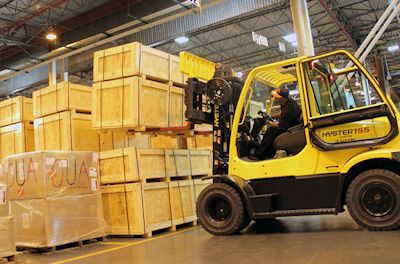Forklift Operations
Loading and Unloading the Forklift
Because of the wide variety of equipment used and the different kinds of stock and materials handled, each company must form additional rules for loading and unloading to fit the needs of its facilities.
Loading Pallets
Know the maximum load that each forklift can carry safely; do not overload it. An overloaded forklift will not operate in a safe manner.
Answer the following questions and check the load before you pick it up.
- Is it stable or will parts slide or fall during transit? Secure it as necessary. The illustrations to the right show some common pallet stacking patterns.
- Do the dimensions and weight of the load fall within the capacity rating of the forklift at the highest elevation and maximum extension you will handle the load? If not, can you break the load into smaller parts?
When you pick up the load:
- Move squarely into position in front of the load.
- Make sure your view is not obstructed.
- Do not permit anyone to stand under or too close to a load that is being hoisted or lowered.
- Position the forks wide apart to keep the load balanced.
- Drive the forks fully under the load.
- Tilt the mast backward slightly to stabilize the load and lift. Check the destination before you place the load.
Knowledge Check Choose the best answer for the question.
5-1. The dimensions and weight of the load should fall within the capacity rating of the forklift at the _____ you will handle the load.
You forgot to answer the question!


